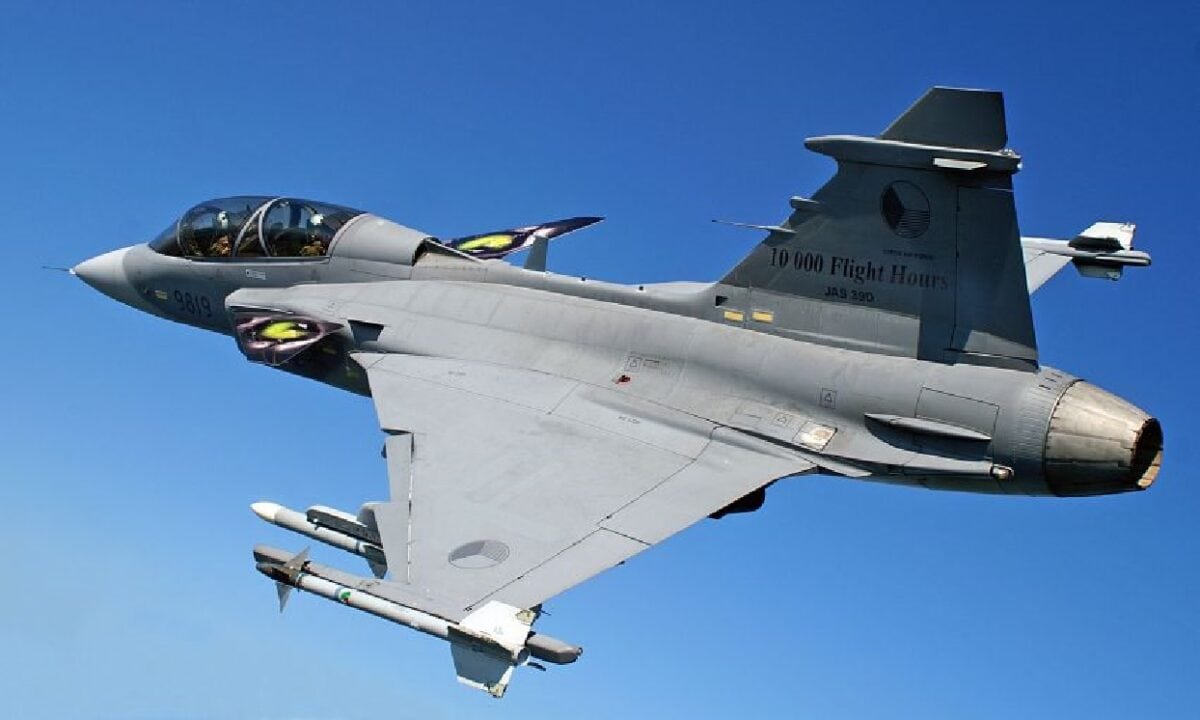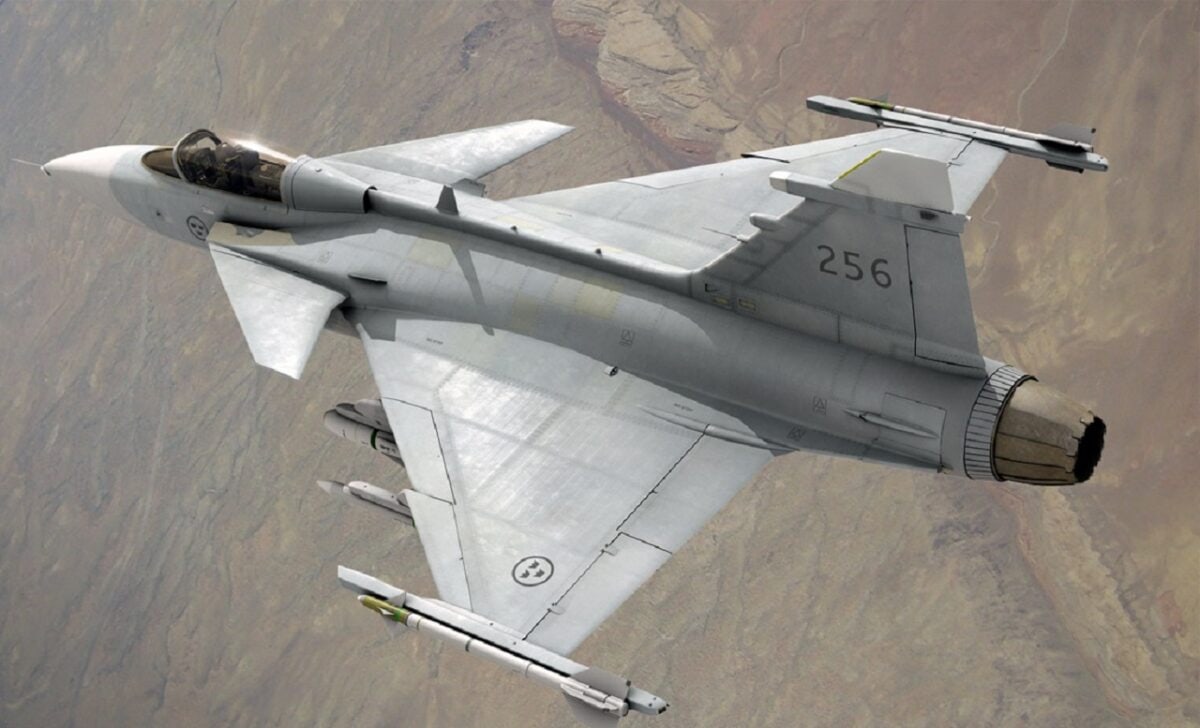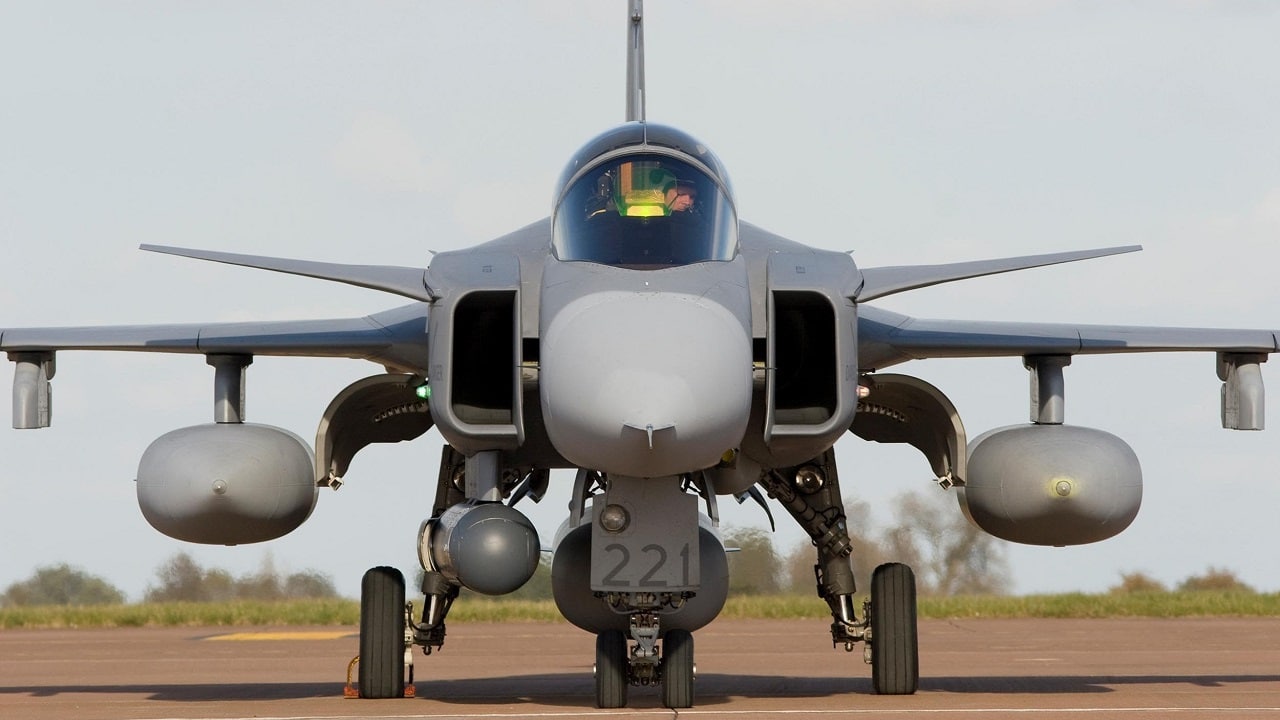Sweden and the Philippines are literally on opposite sides of the world, yet the two nations have moved closer to strengthen bilateral relations. In recent years, the Philippines’ Department of National Defense (DND) has expressed interest in acquiring military hardware from the Scandinavian nation – notably its highly-capable JAS 39 “Gripen” fighter jet.
In 2018 a deal to buy the former Swedish Air Force fighters was first considered, and a similar agreement could be once again in the works. The question is whether the Philippine Air Force (PAF) will choose the JAS 39 over the U.S.-built Lockheed Martin F-16 Viper. Manila has already passed on bids from India, and its HAL Tejas, as well as the Chinese JF-17 “Thunder.” That leaves just the Gripen and Viper in the running.
The JAS 39 Gripen C/D+ variant is largely seen as the frontrunner as the jet to serve as the PAF’s multi-role fighter (MRF), and it could edge out the F-16V Block 50/52, in part as the Gripen uses the same General Electric F-404 engine as the FA-50PH, of which the PAF owns a dozen.
The JAS 39 aircraft featured upgraded electronics, as well as the state-of-the-art avionics present on the Gripen E model. The aircraft that the PAF eventually receives could be second-hand to reduce costs for Manila, but Sweden has expressed the possibility of providing newly built models – similar to what it had previously offered to Croatia.
Philippines In, Czech Out?
Should Manila opt for the Gripen, the timing couldn’t be better for Saab – the maker of the aircraft. It was just last month that the Czech Republic announced that it was looking to acquire upwards of 24 new fighters as its lease for its fleet of Gripens will expire in 2027. The Czech Air Force is currently equipped with 12 single-seat and two double-seat versions of the Gripen.
However, Prague is considering numerous options, and the Lockheed Martin F-35A Lightning II has been seen as the leading contender to replace the Swedish-made fighters. Stockholm could still pull out a number of stops to keep the Gripen flying over the skies of Central Europe. Earlier this month, Fredrik Jörgensen, Swedish ambassador to the Czech Republic, said in a recent interview that the Czech Air Force could even keep the Gripens that it leased from Sweden for free! That could be a hard deal for Prague to pass up, especially as Sweden is set to join NATO – which means that there could be greater cooperation between the two nations.
Complicating matters is the talk about how the Czech-leased JAS 39C fighters could be provided to Ukraine. The catch is that Kyiv wouldn’t actually be provided any of the aircraft until the lease expires in 2027, and then only if Stockholm doesn’t agree to upgrade those fighters to the current E/F version. If that does happen, then Kyiv is likely out of the equation.
Still, with Germany and Finland looking to adopt the F-35, which is also operated or will be operated by multiple NATO members including Norway, Italy, the Netherlands, the UK, and Spain, it is hard to see how Prague wouldn’t make the jump to the fifth-generation fighter.
The number of aircraft could be an issue too.
As of 2016, a total of only 158 Gripens were produced and well over half are in service with the Swedish Air Force, with the rest having been exported around the globe. Current operators include Brazil, the Czech Republic, Hungary, South Africa, and Thailand, while the United Kingdom’s Empire Test Pilots’ School also operates Gripens in a training capacity.
It increasingly seems likely that even as the JAS 39 will be operating from the Philippines, which could give the PAF an advantage in any potential conflict with China; the Gripen’s days over Czech airspace could come to an end in another five years.
Get a Gripen
The JAS 39 was initially designed to replace the variants of the Saab 35 Viggen and Saab 37 Draken combat aircraft. Development of the aircraft began in the late 1970s as part of a joint effort by an industrial consortium that consisted of Saab, Saab Microwave Systems (formerly Ericsson), Volvo Aero Corporation, Saab Avitronics, and FFV Aerotech.
The government in Stockholm sought an aircraft that could be capable of fighter, attack, and recon missions. After evaluating several existing foreign aircraft including the American F-16 and F-18 fighters, the Swedish Parliament decided in June 1982 to move forward with a domestic project.
The resulting JAS 39 Gripen is a Mach 2 delta wing and canard fighter jet powered by a Volvo turbofan engine with an afterburner. It has a range of up to 3,200 km (2,000 miles) and can fly at an altitude of 15,240 meters (50,000 feet). The Gripen made its maiden flight in December 1988, and it entered operational service with the Swedish Air Force in 1997. A total of 204 aircraft in three batches had been ordered by Swedish Air Forces, which to date has taken delivery of 74 aircraft.

Sweden’s JAS 39 Fighter. Image: Creative Commons.
It is presently offered in two modern variants: C- and E-series, yet even those are in need of some updates, and last month it was announced that the Gripen C-series would enter an “upgrade process” that could see those models remain in service until at least 2035.
Earlier this year, the Swedish Defence Materiel Administration (FMV) awarded a SEK 500 million ($52 million) contract with Saab to provide maintenance services for the fighter aircraft. Saab will provide capability improvements to the JAS 39 to maintain its operational relevance for the next decade, as well as cost-effective solutions to help sustain the aircraft for an even longer period.

JAS 39. Image Credit: Creative Commons.
Now a Senior Editor for 1945, Peter Suciu is a Michigan-based writer who has contributed to more than four dozen magazines, newspapers and websites. He regularly writes about military hardware, firearms history, cybersecurity and international affairs. Peter is also a Contributing Writer for Forbes.

